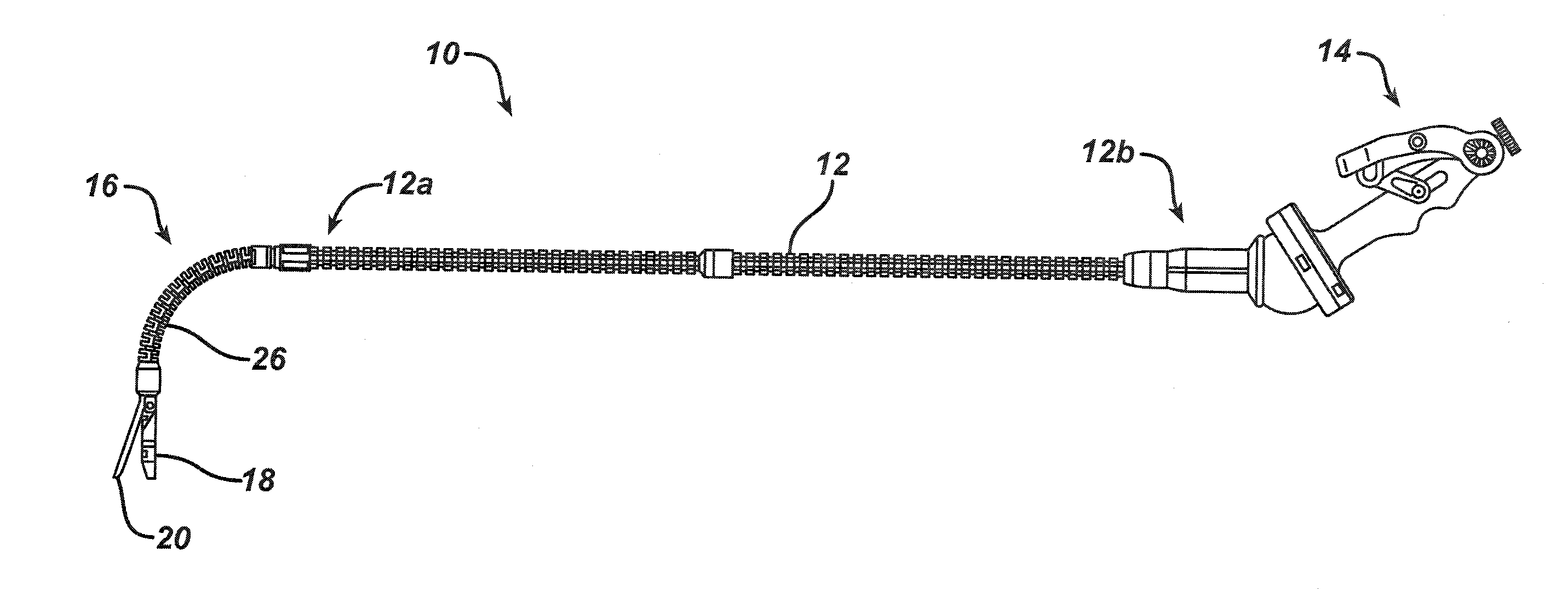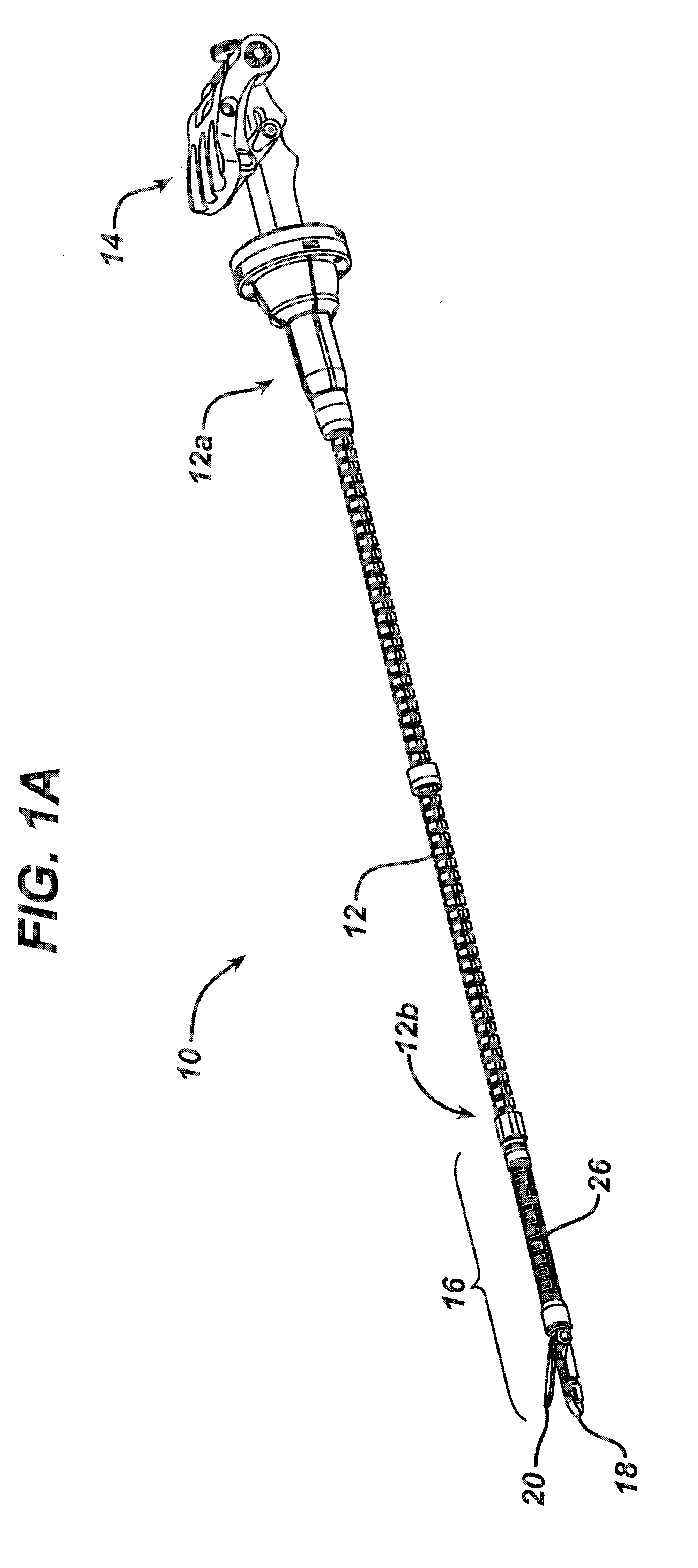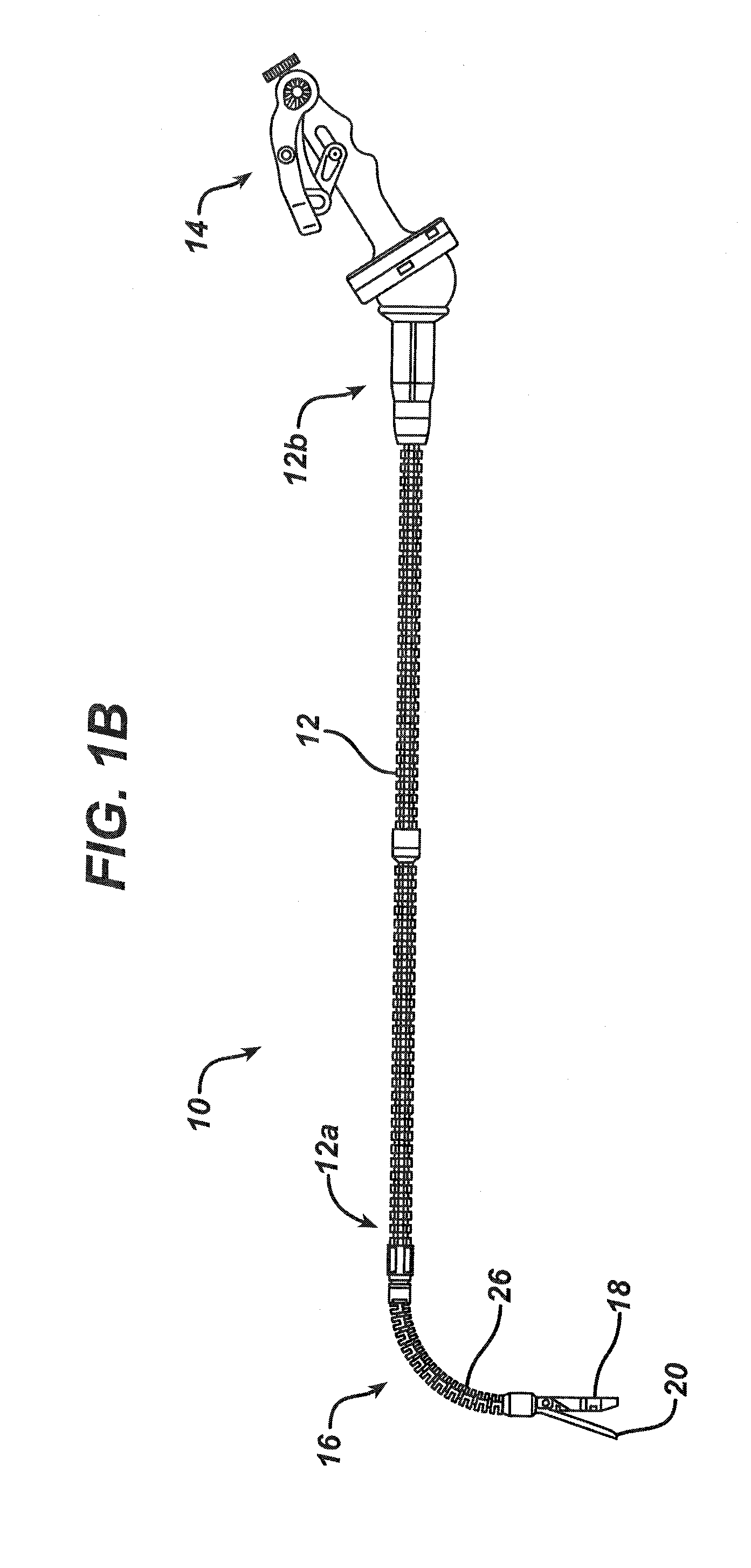Robotically-controlled endoscopic accessory channel
a robotic control and accessory channel technology, applied in the field of robotic control of endoscopic accessory channels, can solve the problems of inability to suitably achieve user-feedback effects, complicated integration of controls for articulating and actuating the working end of an endoscopic device, and interfere with the flexibility of the sha
- Summary
- Abstract
- Description
- Claims
- Application Information
AI Technical Summary
Benefits of technology
Problems solved by technology
Method used
Image
Examples
Embodiment Construction
[0161]Applicant of the present application also owns the following patent applications that have been filed on even date herewith and which are each herein incorporated by reference in their respective entireties:
[0162]U.S. patent application Ser. No. ______, entitled “Surgical Instrument With Wireless Communication Between a Control Unit of a Robotic System and Remote Sensor”, Attorney Docket No. END5924USCIP2 / 060339CIP2;
[0163]U.S. patent application Ser. No. ______, entitled “Robotically-Controlled Disposable Motor Driven Loading Unit”, Attorney Docket No. END6213USCIP1 / 070330CIP1;
[0164]U.S. patent application Ser. No. ______, entitled “Robotically-Controlled Motorized Surgical Instrument”, Attorney Docket No. END6416USCIP1 / 080205CIP1;
[0165]U.S. patent application Ser. No. ______, entitled “Robotically-Controlled Surgical Stapling Devices That Produce Formed Staples Having Different Lengths”, Attorney Docket No. END5675USCIP6 / 050504CIP6;
[0166]U.S. patent application Ser. No. _____...
PUM
 Login to View More
Login to View More Abstract
Description
Claims
Application Information
 Login to View More
Login to View More - R&D
- Intellectual Property
- Life Sciences
- Materials
- Tech Scout
- Unparalleled Data Quality
- Higher Quality Content
- 60% Fewer Hallucinations
Browse by: Latest US Patents, China's latest patents, Technical Efficacy Thesaurus, Application Domain, Technology Topic, Popular Technical Reports.
© 2025 PatSnap. All rights reserved.Legal|Privacy policy|Modern Slavery Act Transparency Statement|Sitemap|About US| Contact US: help@patsnap.com



